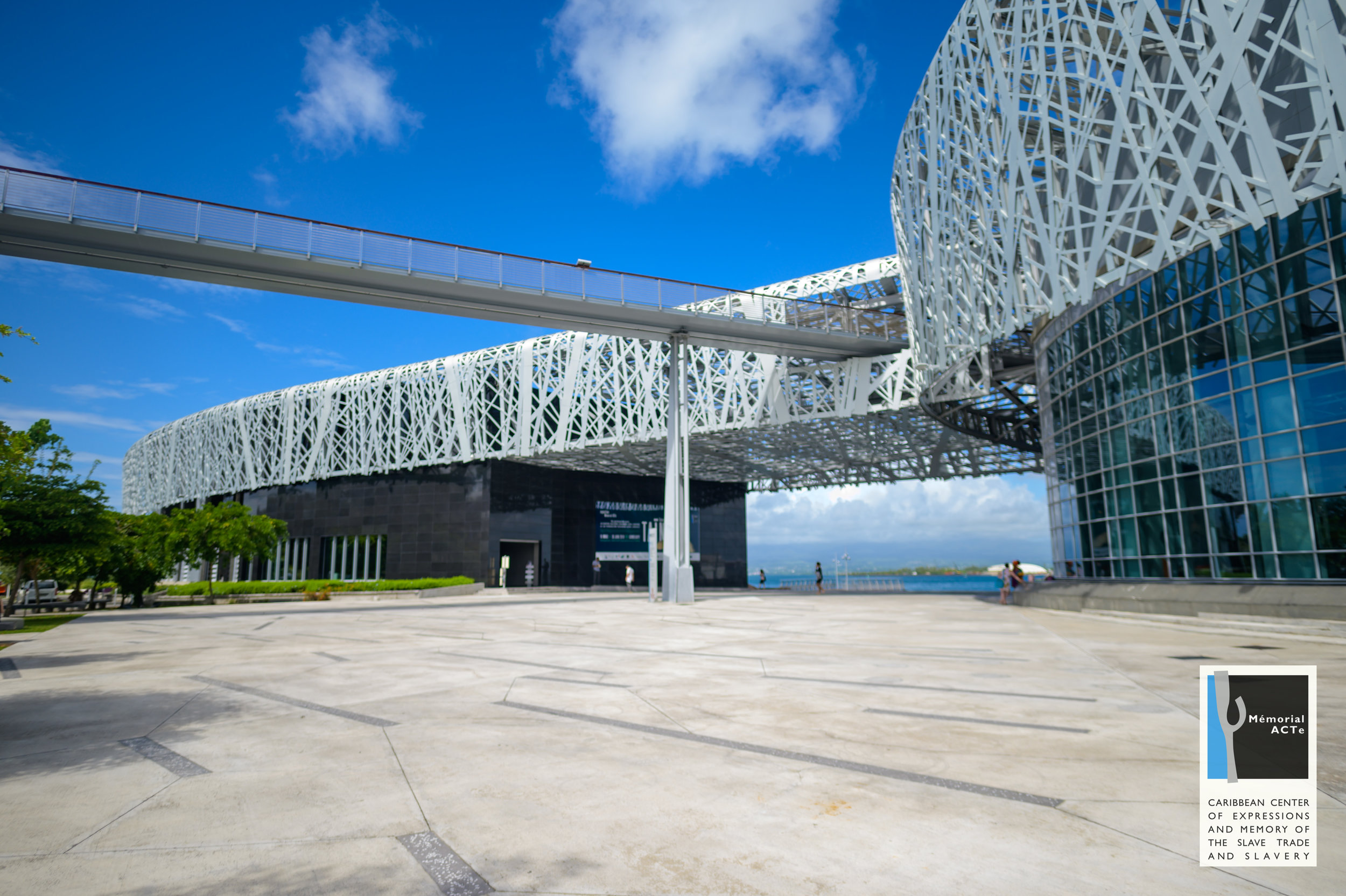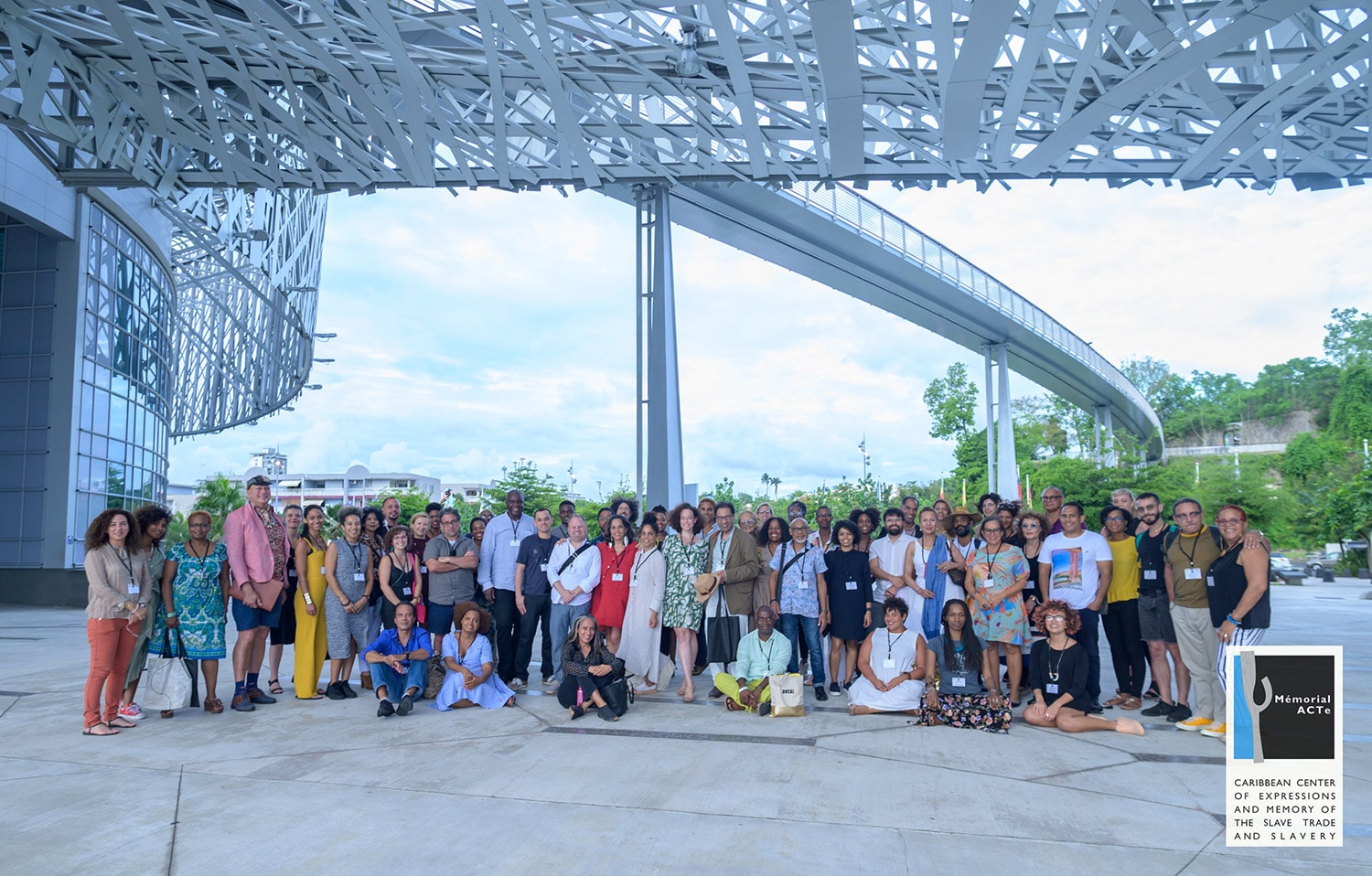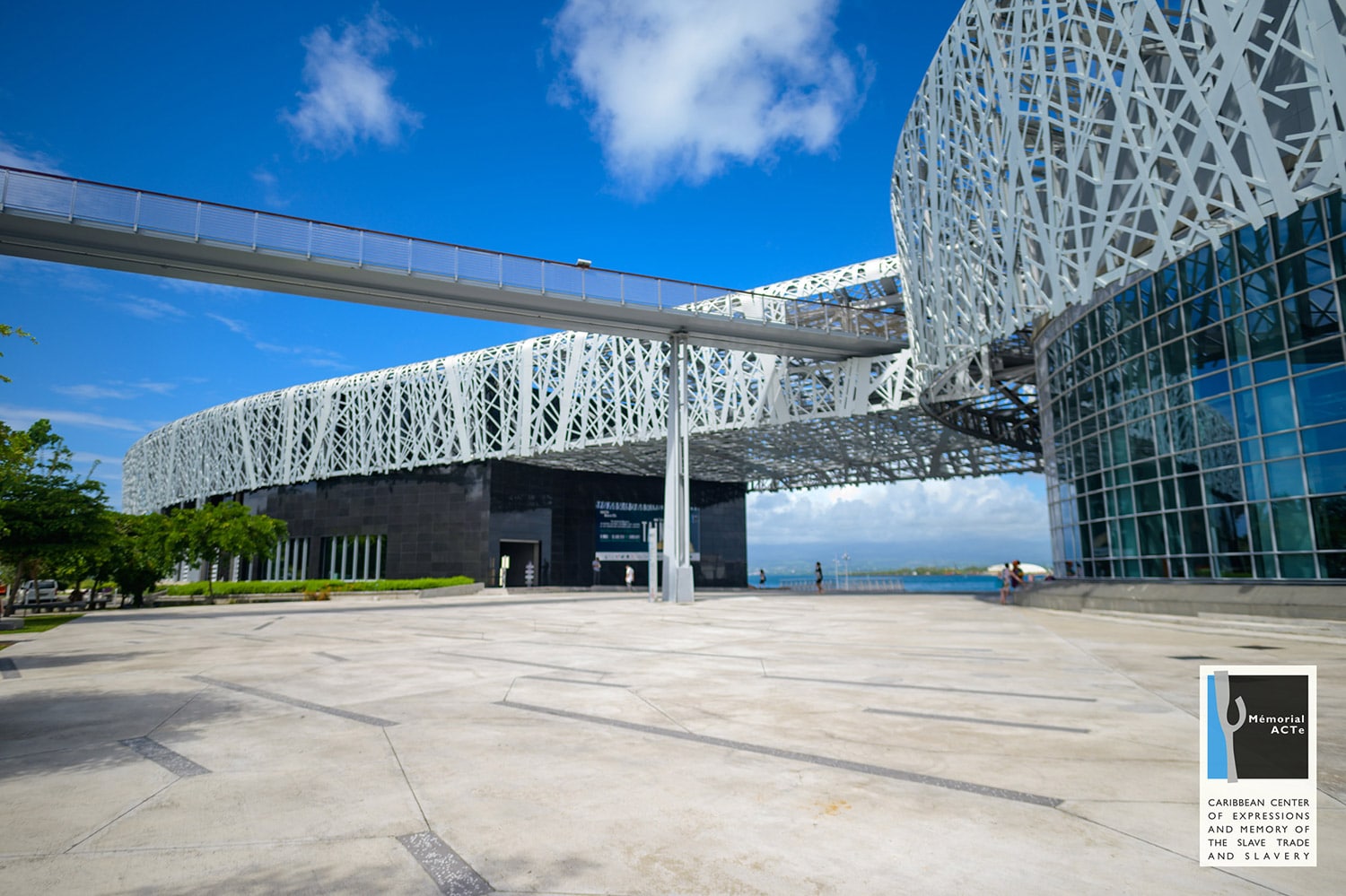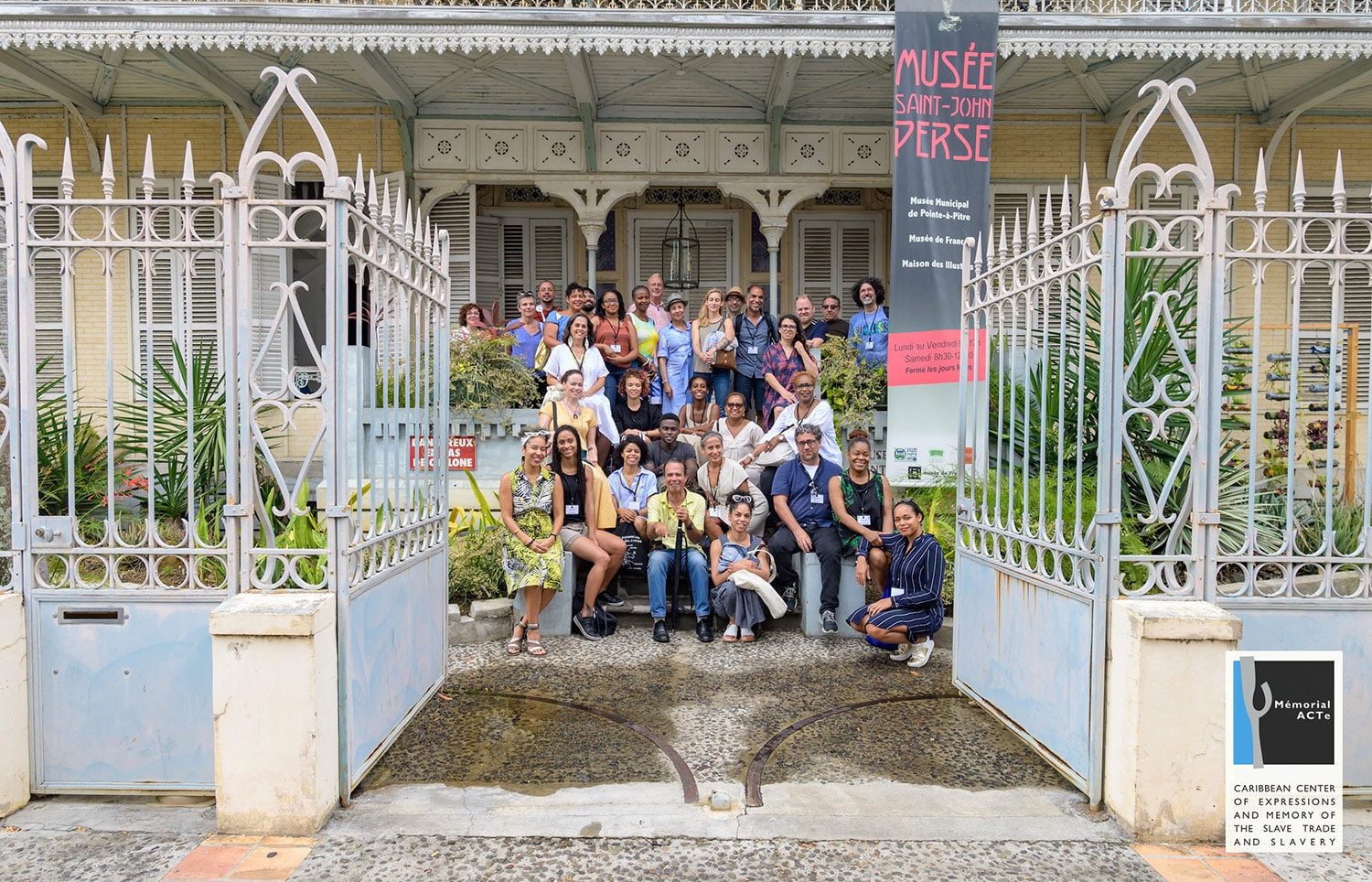
By Letitia Pratt
The D’Aguilar Art Foundation
On a late Monday at the end of May, I sluggishly – by fault of a sleepless travel day – made my way through the airport arrivals in Pointe-a-Pitre, Guadeloupe, unaware of the new ways in which experiencing Tilting Axis 5 (TA5) would change my perspective on many things – on art, the institution, and on my own practice; and how, despite all the harrowing setbacks that I have endured, that it is important to do work in and about the Caribbean.
Before this trip – literally the weekend before – I was overwhelmed with the inherent futility of doing work that is not affirmed by capitalism, that will no doubt put me on a lifelong journey of fighting to understand my own value within society. I felt as if I was working to no end under a weighted tide, writing poems that only echoed back to myself, bouncing against nothing. But on the first day of the annual meeting I was confronted by the realisation that my problems are not only my own, and that there are other young artists, writers, curators and all around creative professionals all over the Caribbean and its diasporas that also feel the unhealthy pressure to perform under the futile weight of late-stage capitalism.

Group shot of Tilting Axis 5 delegates at the Memorial ACTe in Guadeloupe. Images courtesy of Guillaume Aricique, copyright the Memorial ACTe.
Thus, this year’s topic, “Beyond Trends: Decolonisation and Art Criticism” was certainly apt, and my own struggle to find myself as an artist and writer became contextualised within the larger conversation of this conference. The most prominent of presentation to me was cultural critic Manthia Diawara, the keynote speaker of the TA5, who was particularly inspiring to listen to. He outlined the ways in which we can imagine our space in a different way, and how our efforts to decolonise – to define ourselves as artists, writers, curators – will only be successful through understanding our shared problems, and through connecting with each other on the deepest of levels, artistic, social, and otherwise.
Tilting Axis 5, then, became a way for us to come together and see ourselves for the first time. It was more than just a list of presentations – it became about how to solve to the shared problem of colonisation that we all face working in the Caribbean art community.

Memorial ACTe building and architecture which references a banyan root system which holds up land.
Contextualizing Edouard Glissant’s “The Poetics of Relation” (French edition, 1990; English Translation 1997) Diawara spoke about on the great need to connect ourselves as a region. This was the driving force and intention for Tilting Axis 5.According to Diawara, Glissant argues that the nature of colonisation is to disconnect people from themselves, which can only be countered by efforts such as this one – by creating spaces to explore our similarities, to find solidarity – and to remember our shared spiritual roots, ancestors, and histories from which we were once violently ripped from.
This remembering is crucial to our survival. One of the most striking illustrations of how forgetting was particularly harmful was Pascale Marthine Tayou’s installation, L’arbre de l’oubli, (translated into ‘The Tree of Oblivion’) which was displayed in the heart of the Memorial ACTe’s permanent exhibition. The Memorial ACTe (MACTe), the hub in which we all convened to attend this conference, is a juggernaut of an institution, and we were privileged to receive tours of the two permanent and temporary exhibitions they had on display at the time – one on the history of Cristopher Columbus’s encounters and the “discovery” of Guadeloupe, and another on the ancient Taino peoples of the island and the region, titled the same name. The L’arbre de l’oubli, erected powerfully in the middle of the permanent exhibition, was a startling reminder of the tools colonial powers used to rip us from our spiritual roots. Historically the L’arbre de l’oubli was used by slave merchants – after buying and branding African peoples – to separate people from their ancestors and memories through ritual (by walking backwards around the tree) but in the exhibition, we were encouraged to move forward around the large sculpture, as an antithesis to this abuse. We were encouraged to take in the sculpture’s hanging branches of duppy bottles, drums and dolls; to take in the comforting shade of moving under the memories of our own ancient spiritual knowledge that this tree represented.
The irony did not escape us that we were tackling the issue of decolonisation in a large institution like the Memorial ACTe. But this problem is true for all museums. Like Tilting Axis 5, the MACTe attempts to create a space by which we can connect us to our shared histories. Whether we are in the mood to connect to these particular gruesome histories or not is another story, and the Memorial ACTe is attempting, like most institutions, understand its position within this colonial context. Tilting Axis 5 was a way for the Memorial ACTe to pay homage to these roots – spiritual or otherwise – that were ripped from our memories.

A selection of the Tilting Axis 5 cohort visiting the nobel prize for literature winner Saint John Perse’s historic home in Pointe-a-Pitre.
All of the presentations during Tilting Axis – all of them –focused some way or other around reclaiming these histories. Like walking forward under the L’arbre de l’oubli, we, as an audience, were attempting to remember the pieces of history that we all share. In particular, during a presentation by Hrag Vartanian—the editor of an international art journal, Hyperallergic—he spoke about how colonisation is the process of controlling the narrative and how the work of activist and artist is about reclaiming this power. This was something I really needed to hear at this time. Also through many conversations within the conference’s cohort, it seemed like something that everyone else needed to hear as well.
Tilting Axis 5 helped me think about how I can reclaim these narratives in my own writing, and how my voice, like many other voices who do many beautiful works throughout the Caribbean, matters so much.
I want to thank the National Art Gallery of the Bahamas, which provided the funding for Tilting Axis to craft an Open Call grant for Bahamians to travel to the conference, for giving me the opportunity to connect with other people who have the same fears as mine, and for giving me the space to ultimately connect with myself.